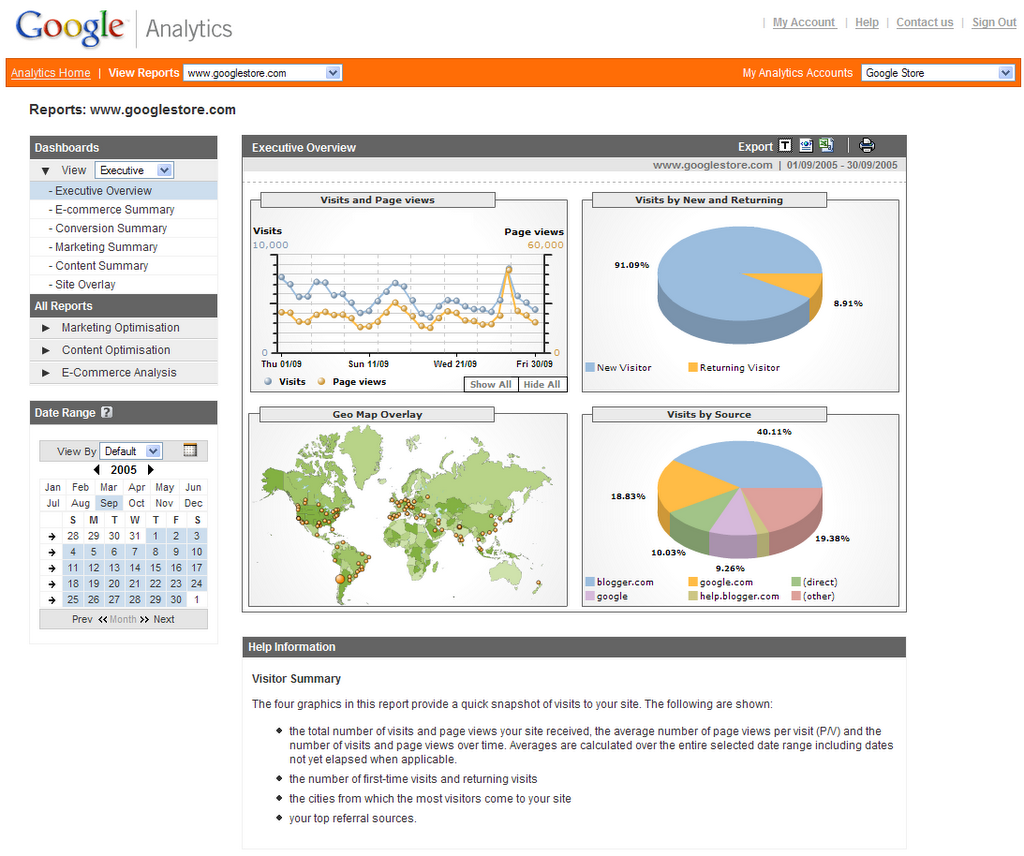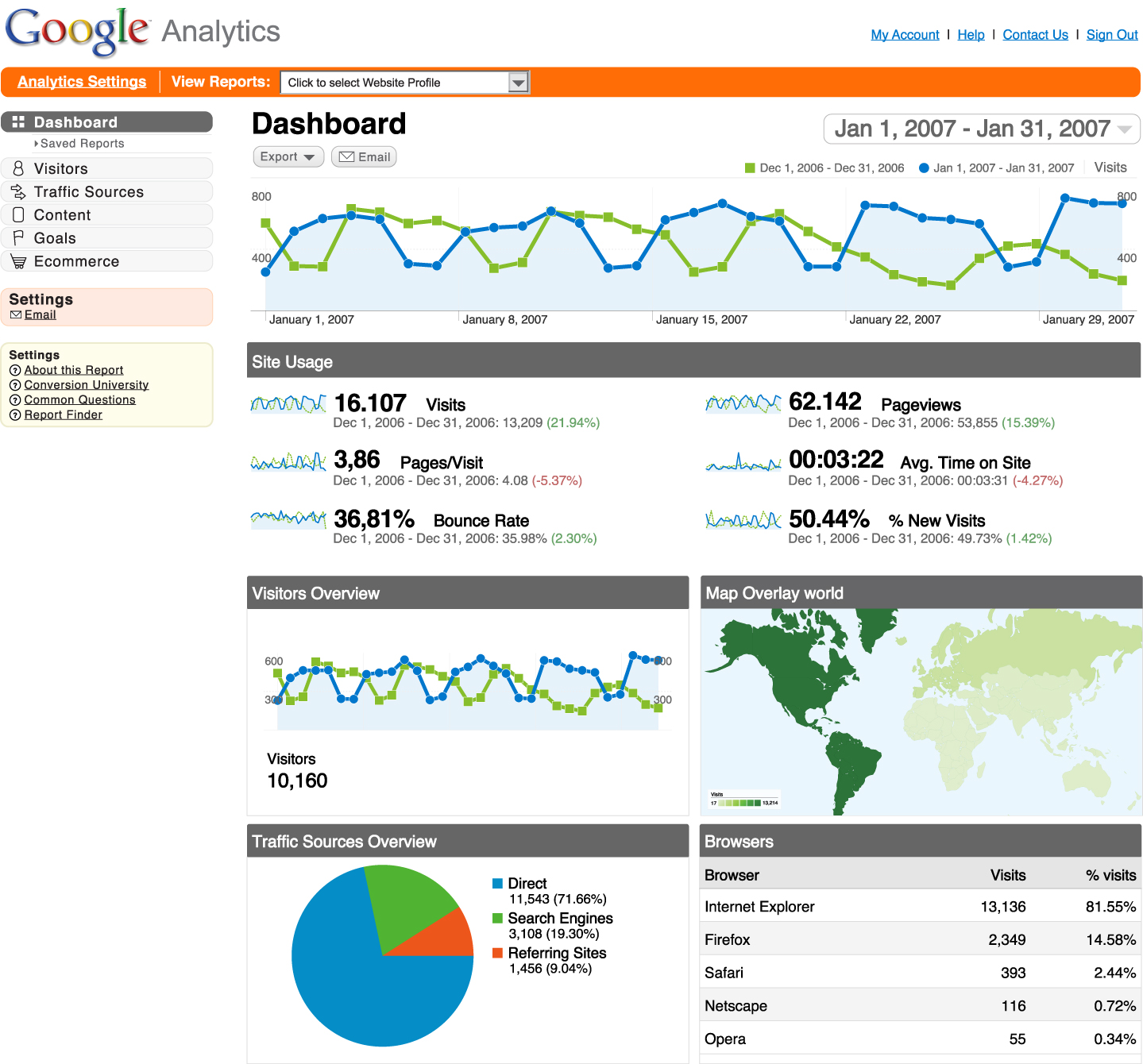Google Analytics: Tips and Tricks

Almost every webmaster uses Google Analytics, the powerful metrics tool that has it all – unfortunately, most of these users have no idea what they're doing.
Sure, they log in, check the traffic, gawk noncomprehendingly at the graphs for a while, and try to see if their popularity is ascending or descending but that's about it.
Well, Google Analytics has enormous potential to help your business keep growing, but not when you used it like this – and that’s why we're going to give you some tips on how to use Google Analytics to its fullest extent.
Aim for the Right Market:
So, let’s imagine your company is based in Dublin and that you’re currently aiming your communication efforts towards that area. By checking Google Analytics you can find out where your audience is from, and if 90% of it is from the United States and only 10% from Dublin, then you're directing most of your marketing efforts towards a very small percentage of your customer base. That means you are probably ignoring a gold mine by not focusing on the USA.
By using this tool you can geographically target your audience, and finding out the specific demographics that comprise your clients can help you retarget more accurately. That means you'll start generating more conversions and subsequently increased revenues.
Find Out Who’s Buying:
One thing many e-commerce shop owners don’t realize is that getting new customers shouldn't always be the top priority. It's always an important part of the plan, but you have to consider the fact that it's easier to up-sell an existing customer than to convince a brand new one to buy.
This is why you’ll want to pay extra attention to your current clients as opposed to your prospective ones. A good way to do this is by using the source information to tailor some pages or recommendations for people that come to your site through certain sites.
For example, if you've noticed your social media sites are funneling a lot of traffic into your site, make an effort to set landing pages that correspond with the social media site's calls to action. So if you had a CTA that was suggesting a customer take a look at a certain product, be sure that the banner the user hits for the clickthrough corresponds to that product page.
Similarly, if 40% of your traffic is coming from blogger.com, as shown in the graphic below, you might add some text rich content to your site, because you know your visitors are likely used to reading well written and entertaining content.

Credibility is often won with a good first impression:
Find out if people are leaving your site too soon. If they this is the case, it is most likely due to a weak first impression. Web pages with a good design and quality CTA paths can usually establish a great first impression and maintain user attention until the point of conversion. Confusing or badly designed pages on the other hand, tend to discourage or frighten potential customers. If your visitors are hustling off of your page too often or too quickly then you should invest some time and capital into improving it.
Bounce rate isn't always directly linked to template design though. It could be you've targeted an ineffective keyword for your page, or a number of other factors could be at play. It's important to look at your metrics with a critical eye to try to take in all the possibities.
Browser Compatibility
There are a lot of technical difficulties associated with a website that can really hinder your promotional efforts if left unattended. One of these aspects is browser compatibility. Google Analytics doesn't just show you the browser your audience is using for kicks. It's actually to warn you that if 50% of your audience uses Google Chrome then your page should be Google Chrome compatible. While the vast majority of users will be on Internet Explorer, it's important to make your site all inclusive.
This is also true for mobile devices. If you don't have a mobile version and application for your site, it would be very wise to get that in the works. With the rise of mobile technology, people expect to be able to access your site on the go without losing any functionality.
This is also true for mobile devices. If you don't have a mobile version and application for your site, it would be very wise to get that in the works. With the rise of mobile technology, people expect to be able to access your site on the go without losing any functionality.
All Data is Important
Another piece of data people don’t usually pay attention to is the screen resolution of their audience. Well, even this can be a vital consideration when creating a website.
Lower resolutions produce bigger images than their more elevated counterparts. So if the resolution of your audience utilizes is mainly high, you can take advantage of the extra real estate that creates on your website’s display – or you can increase the size of the copy to be more legible.
Lower resolutions produce bigger images than their more elevated counterparts. So if the resolution of your audience utilizes is mainly high, you can take advantage of the extra real estate that creates on your website’s display – or you can increase the size of the copy to be more legible.
However, if your market uses mainly low resolution monitors you should scale things down a bit.

Keyword Optimization
Always check where your traffic is coming from. If the majority of your traffic is coming from a certain keyword over an extended period of time, then you have got a nice keyword there, but there's no reason you can't make improve it.
Chances are that if you improve that keyword’s rating you’re going to get a massive return on your investment. You can raise its ranking through the employment of an SEO expert or even start a Google Adwords campaign.
Targeted Advertising: Your Best Option
We've already discussed how up-selling is preferable to advertising to new clients, but there’s another concept that usually yields tremendous results: Targeting.
To successfully target a section of your customer base, you must analyze what certain customers are consistently buying and create specific suggestions for them. Amazon has been doing this with great success for quite some time. Every Amazon page is specifically tailored to the person seeing it.
We know it isn’t normally possible to create such a big and complicated programming algorithm for your everyday small business, but you can always target specific groups on your mailing list by examining their browsing habits.
We hope that this article helped you realize how important Google Analytics is, and that metrics can be an extremelly useful tool when it comes to improving the way you do business.














Comment(s)0